Email campaigns are only gaining in popularity over the past 18 months. Yet, while most teams focus on the technical setup, personalization hacks, or subject lines, more and more evidence shows that one factor trumps all the others: the quality of your audience data and how precisely you segment it. In other words, sending the right message to the right audience segment is the single biggest driver of email engagement success. This report examines recent A/B test data, online discussions, and case studies to demonstrate how accurate audience segmentation can dramatically increase open rates, click-through rates (CTR), and even reply rates in B2B email campaigns. We also explore which segmentation plays (demographic, firmographic, behavioral, etc.) have the most impact on engagement. The findings consistently reinforce a core insight for enterprise software and SaaS leaders: optimizing who you email is often more important than what or how you email them.
Segmented Campaigns vs. Generic Blasts: Much More Engagement
Multiple analyses confirm that segmented email campaigns outperform non-segmented “batch-and-blast” campaigns by a ton. One large-scale study by Mailchimp found that, on average, segmented campaigns achieved 14% higher open rates and 100% higher click rates than non-segmented campaigns.
In other words, just dividing the audience into targeted groups doubled the click-through rate relative to sending a similar generic email to everyone. These findings are echoed by others: for example, a 2022 analysis noted segmented sends get about 23% more opens and 49% more clicks on average than unsegmented sends.
Marketers on the front lines have seen similar improvements. In one forum, a Redditor reported seeing click rates jump by up to 50% just by sending more targeted content to specific audience groups.
The consensus is clear that segmentation leads to much better engagement across the board.
Not only do opens and clicks improve, but segmentation also tends to reduce bad outcomes like unsubscribes and spam complaints. The Mailchimp study noted that segmented campaigns had about 9% lower unsubscribe rates and fewer abuse reports than non-segmented campaigns, which is huge.
By sending more relevant emails, companies can avoid list fatigue and audience annoyance that cause your prospects to tune out. Taken together, the data paints an interesting picture wherein higher relevance through segmentation drives more readers to open and act on emails, while also minimizing disengagement. Sounds like a no-brainer.
Open Rate Improvements from Segmentation
The first metric of engagement is the open rate, and segmentation has a big impact here. Precise targeting consistently correlates with higher opens. For example, Sacramento Public Library found that when they sent a general newsletter to their whole list, the open rate was only about 12%, but after segmenting by interest (tech-savvy users) for a specific campaign, the open rate jumped to 30–40%.
This is a huge 3X increase in opens purely by narrowing the audience to those for whom the messaging and content were most relevant.
B2B marketers have seen similar patterns. One B2B email marketer on Reddit noticed that emails to a small, well-targeted list (300 contacts) saw around a 50% open rate, whereas a broader email blast to 5,000 contacts saw roughly a 35% open rate.
The more focused list (in this case segmented by industry with persona-based content) outperformed the larger generic list by 15% in opens. The reason is logical: the larger the list, the more subscribers who “aren’t directly in love with your product or service,” and those uninterested recipients tend to open much less often.
On the other hand, dividing a big list into smaller segments aligned by industry, role, tech stack, or interest makes each email more specific to each persona and segment, improving open rates.
Even small segmentation can yield decent gains. A veteran SaaS marketer shared that simply segmenting out inactive subscribers and sending tailored “win-back” content can improve open rates.
In another recent case study, Mention.com restructured its email strategy to segment contacts by persona and solution lifecycle stage; as a result, their email open rates stabilized in the 40–50% range on average,
way above typical B2B benchmarks. In fact, Mention acknowledged that before segmentation, blasting untargeted emails was causing them to “lose contacts,” whereas after implementing segmentation, engagement and retention improved significantly.
Key takeaway: Companies that segment their audience lists tend to see double-digit percentage increases in open rates vs. one-size-fits-all, generic sends to the entire list. In practice, that can mean tens of thousands more prospects actually reading your message, simply because it was written to their profile or behavior.
Click-Through Rates and Conversions
Improving opens is only half the fight, segmentation’s biggest impact often is seen in click-through rates. Because segmented campaigns can deliver content that resonates with the recipient’s needs or interests, recipients are far more likely to click links and engage further. Across multiple studies, segmented emails consistently achieve 50% to 100% higher CTRs than non-segmented emails.
Mailchimp’s research found a 100.95% higher CTR for segmented sends vs. non-segmented,
essentially doubling the engagement!

Real-world case studies put these numbers into context. An e-commerce pet supply retailer (“Doggyloot”) segmented its email list based on customers’ dog size (small, medium, large) and personalized the content. The result was a ridiculous 410% higher click-through rate (and a 10% higher open rate) compared to their previous one-size-fits-all emails.
In another case, fashion T-shirt retailer Johnny Cupcakes segmented emails by gender and interest, which drove a 42% increase in CTR and ultimately a 123% increase in conversions for a product launch campaign.
These are evidence-based examples of segmentation turning relatively meh campaigns into fabulous ones by matching the message to the audience subset. Simple!
B2B marketers have also seen major click-rate improvements by segmenting. In a community discussion, one marketer noted “I’ve seen click rates jump by up to 50% just by sending more targeted content to specific audience groups.”
Rather than generic, boring pitches, they customized content and CTAs to each segment’s interests. Another email pro advised that beyond subject line tests, teams should A/B test different content for each audience segment because what works for one group might bomb for another.
This approach acknowledges that segmentation and content are connected, you segment the audience so you can deliver more relevant content, which in turn drives clicks.
Crucially, higher CTRs mean more prospects entering the next stage of your funnel (completing a landing page, signing up for a demo, etc.). The dramatic CTR lifts from segmentation often translate into better downstream metrics like lead conversions or revenue. One study found that segmented, targeted emails generate 58% of all email revenue, stressing that the majority of email-driven revenue comes from campaigns with focused targeting.
Even in cases where the total volume of emails is lower, segmented campaigns still deliver more clicks and conversions from the people who matter. Segmentation doesn’t just get more eyeballs on your emails but it encourages more of the right people to take action.
Reply Rates in Outbound Sales Emails
For outbound sales development campaigns, replies are the most important metric, and here too, the data indicates that smaller, well-segmented sends outperform generic spray and pray. A 2024 cold email benchmark study found that “sending cold B2B email sequences to fewer than 100 people results in the highest reply rate of 5.5%”, whereas larger blasts have lower replies overall.
In other words, highly targeted micro-campaigns tended to see 5.5% responses, compared to the 5.1% average reply rate across all campaigns (which included much bigger sends). While a difference of a few tenths of a percent may sound small, in enterprise outreach campaigns it can be significant, it could mean 5-6 extra prospects replying per 1,000 emails, potentially doubling the number of opportunities if your baseline was low.
Practitioners attribute higher response rates to careful segmentation of prospects. Rather than blasting 5,000 contacts with the same template, top performers are breaking their outreach into smaller segments (by industry, persona, or account) and crafting messages for each. As one sales consultant put it, “Segmentation. Segmentation. Segmentation. Just by sending emails to your most active subscribers, you can dramatically boost open rates”, which ultimately leads to more replies in a sales context.
High-engagement segments (people who have shown interest or match the ICP closely) will naturally respond at a higher clip than a cold broad list.
Additionally, segmentation in outbound allows for multi-threading within target accounts, which has shown better reply outcomes. The same study noted that reaching out to multiple stakeholders at a single company can raise the combined response rate to 8%.
This is essentially account-based segmentation, selecting a cluster of contacts per account (CTO, VP Engineering, and DevOps Manager at a tech org) instead of a random mix of contacts. By focusing on relevance at the account level, reps increased the likelihood that at least one contact would respond.
Overall, while reply rates depend on factors like message quality and deliverability, having a laser-focused, segmented recipient list is foundational to achieving above-average responses. Poorly targeted outreach (emailing hundreds of people who don’t need your solution) yields awful replies no matter how well-written your email is. The evidence suggests that sales teams should invest time in lead list quality and segmentation just as much as in writing sequences if not more.
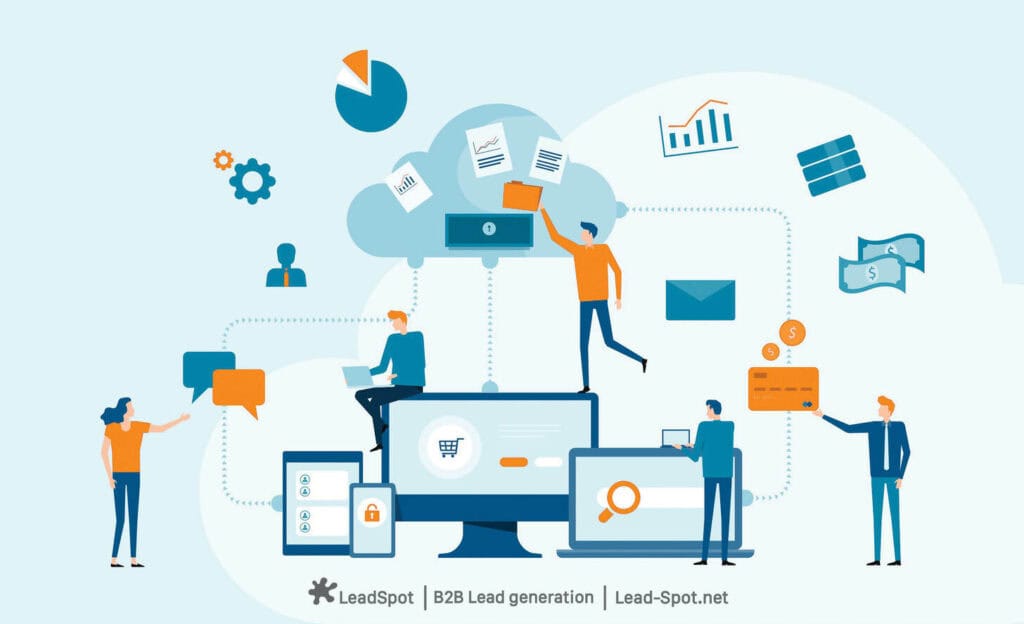
Why Audience Data Quality and Segmentation Trump Other Factors
Why does segmentation have such a big impact? The biggest reason is relevance. When an email aligns with the recipient’s profile, addressing their specific industry, role, interests, or stage in the buyer journey, it immediately stands out from generic mass emails. Recipients are far more likely to open an email that speaks directly to their situation and far more likely to click or reply when the content addresses their unique pain points or desires. On the flip side, even a perfectly crafted email will fall flat if sent to an indifferent or mismatched audience. As one marketer bluntly says, emails to large broad lists include many recipients who aren’t “in love” with your product, “and these subscribers tend to open less often.”
No amount of clever personalization in the copy can compensate for fundamentally irrelevant audience targeting.
It’s helpful to compare the impact of segmentation with other commonly cited success factors in email marketing:
Technical deliverability setup: Ensuring proper authentication (SPF/DKIM), sender reputation, and inbox placement is definitely important, emails can’t drive engagement if they land in spam. But assuming you follow best practices to reach the inbox, deliverability alone won’t automatically mean clicks. A well-delivered but irrelevant email will be ignored or deleted. Many companies with rock-solid infrastructure still see poor engagement because they are emailing the wrong people or stale lists. In fact, mailing inactive or too broad of lists will hurt deliverability over time. The recommended fix is often improved segmentation and list hygiene, removing or re-engaging those who haven’t opened in 6+ months.
List quality and segmentation thus feed back into technical success. By filtering out unengaged recipients, one can dramatically improve inbox placement and open rates for the remainder of the list (because ISPs see higher engagement percentages). Segmentation, then, is a proactive form of deliverability optimization via sending only to receptive audiences.
Personalization and content optimization: While personalized content is important, it works best with accurate segmentation. Generic personalization (like using a first name or company name in the greeting) yields only modest improvements. For instance, personalized subject lines can increase opens by 26% in some studies,
for sure a helpful increase, but not as large as the segmentation gains noted above. True 1:1 personalization at scale requires segmenting your list anyway (to deliver different content to different groups).
Demographic details or personalization should only be used if they genuinely matter to the message and segment. Blasting everyone with the same “Hi {Name}, [generic pitch]” is not much better than a non-personalized blast. Segmentation ensures your personalization is relevant. For example, you might personalize an email to speak to challenges in the finance industry only for recipients in that industry segment. That level of relevance drives engagement far more than superficial personal touches sent to everyone. In summary, content personalization multiplies effectiveness when built on a segmented strategy, but without good segmentation, personalization alone won’t rescue engagement.
Email frequency and timing: Some marketers experiment with send times or frequencies to find an “optimal” moment when more subscribers will open. While timing can have an effect, it’s often marginal at best compared to the impact of list quality. A/B tests on send time might move the open rate by a percentage point or two.
Changing the target audience, however, can improve opens and clicks by double-digits, as we’ve seen. Additionally, if you have a highly segmented list of genuinely interested recipients, they will open your email whenever it’s sent (within reason). The Sacramento library’s segmented tech-focused emails achieved 35% opens even without trying to optimize send time.
This suggests that a compelling message to an interested segment can overcome suboptimal timing. On the other hand, blasting an uninterested audience at the “perfect” 10:00 AM slot on Tuesday won’t create engagement out of thin air. Thus, while testing timing is fine-tuning, getting the right audience is a foundational move.
In essence, audience segmentation addresses the fundamental question of message-to-market fit. If that fit is strong, other optimizations yield greater benefits (and the campaign is starting from a higher baseline engagement). If the fit is weak, other optimizations have diminished returns. As B2B marketing leaders, this means the lion’s share of our effort should go into curating high-quality prospect data and segmenting it intelligently before we worry about polishing every last sentence of copy or tweaking send schedules. The evidence-backed rule is simple: relevance drives engagement, and segmentation is the vehicle to maximize relevance.
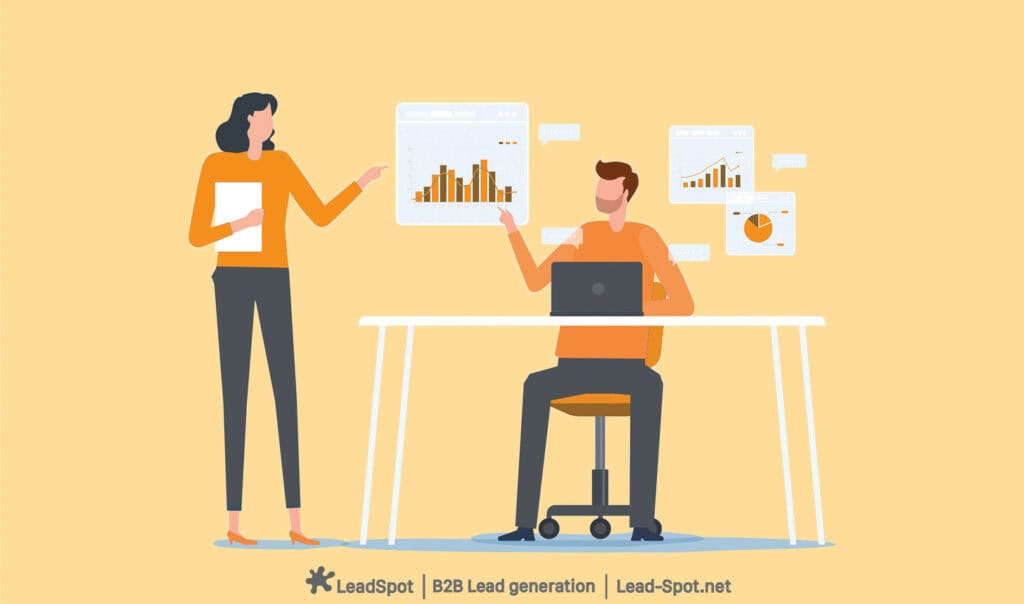
Segmentation Strategies and Their Impact (Demographic, Firmographic, Behavioral, etc.)
Segmentation isn’t a one-size-fits-all approach, the way you segment your audience should align with your business and campaign goals. Let’s examine a few major types of segmentation used in B2B campaigns and how each can influence engagement metrics:
Firmographic & Demographic Segmentation (Industry, Company Size, Role): Segmenting by firmographics is extremely valuable. Prospects in different industries or job roles respond to different value props. For example, a software vendor might separate email lists into manufacturing, healthcare, and financial services industry segments, or into C-level, VP, and Manager segments, and craft tailored messaging for each. This strategy was validated by a Reddit user’s observation that an email tailored to one industry segment massively outperformed a general email to a mixed list.
In their case, each list received a version of the campaign “customized for that industry,” and the smaller industry-focused send hit 50% opens vs. 35% on the broad send. Similarly, Mailchimp’s analysis found that segmenting by a merge field like job title or customer type led to much higher click rates (+55%) than non-segmented campaigns.
Takeaway: Grouping recipients by relevant firmographic traits allows you to speak their language, increasing the odds they find the email worth opening and clicking.
Behavioral Segmentation (Engagement Level and Activity): Another high-impact approach is segmenting based on subscriber behavior or engagement history. This can include creating an “engaged” segment (opens or clicks in the last 90 days) and a “cold” segment (no engagement in 6+ months), then treating them differently. Engaged subscribers might receive your regular campaign, while cold subscribers get a re-engagement series or are suppressed to protect metrics. Marketers widely endorse this: “I’d start with an ‘engaged’ and ‘disengaged’ segment and send most of your emails to engaged… If the disengaged folk engage, they’ll move across to your engaged segment.”
This advice highlights how sending to disengaged contacts can weigh down your overall results and even cloud your understanding of what content resonates. By isolating them, you can try win-back tactics or remove them without hurting your core metrics. In fact, Mailchimp’s data shows that campaigns segmented by subscriber activity have much lower bounce rates and healthier lists.
One caution: the Mailchimp study noted that targeting the “least-engaged” segment with campaigns led to slightly higher abuse reports and unsubscribe rates,
essentially, emailing the truly disinterested can get them to opt out. The lesson is to use engagement segmentation mainly to focus on more engaged groups (for positive uplift) and to carefully prune or gently re-engage the inactive. Done right, behavioral segmentation boosts engagement by always matching email frequency and content to the recipient’s demonstrated interest level.
Interest & Psychographic Segmentation: Segmenting by known interests, preferences, or needs can yield some of the biggest engagement gains, as it cuts to what the subscriber cares about. This often relies on data like past content downloads, self-reported preferences, or browsing behavior. The public library example illustrates this well, by using patron data to identify who was “tech-savvy” and interested in e-books, the library could send tech-related announcements only to that segment, tripling the open rate of those emails.
In a private sector example, Mailchimp users who segmented by interest groups (e.g. customers self-selecting topics of interest) saw click rates about 75% higher than non-segmented sends.
Psychographic segmentation (grouping by attitudes or persona profiles) is essentially what Mention.com did by using buyer personas. Mention-created segments like Social Media Marketer vs. Growth Marketer and sent each persona content relevant to their motivations; their consistently high 40-50% open rates indicate how effective this approach was.
The important thing is having data to identify these interests, whether via preference centers, past behavior, or external data enrichment. When you do, segmenting by interest is one of the surest ways to optimize clicks, because you’re delivering exactly the content the subscriber wants to consume. Marketers often find creative ways to gather this data (for instance, Doggyloot’s campaign offering an incentive for customers to share their dog’s size and birthday, which then powered their segmented emails).
The effort pays off in substantially higher CTRs and conversions, as seen in the earlier case studies.
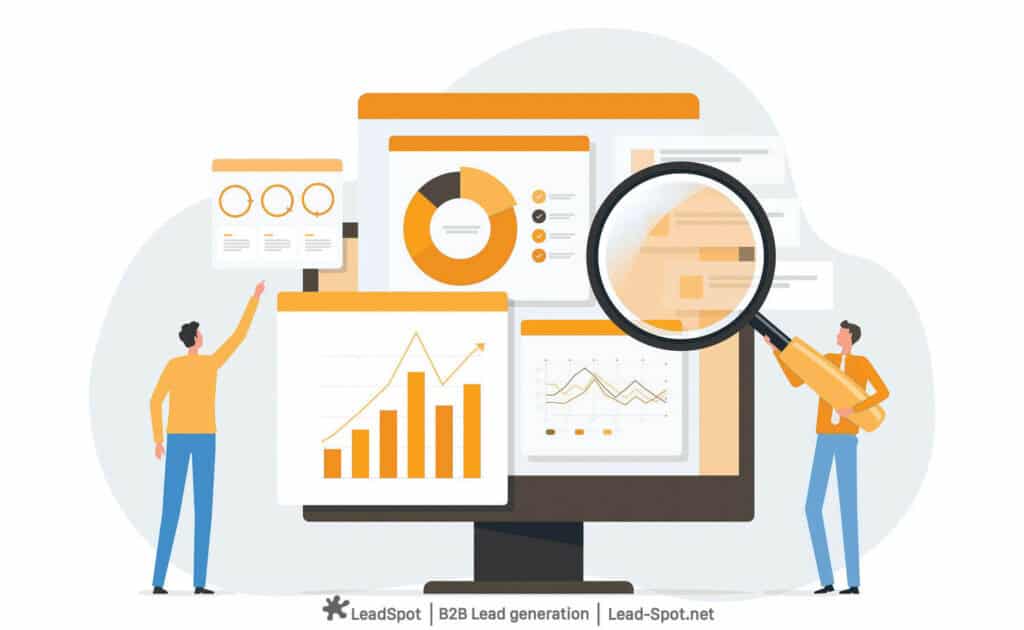
Lifecycle or Funnel Stage Segmentation: Especially for B2B SaaS, segmenting by where the prospect is in the buying journey (top-of-funnel awareness vs. ready-to-buy) is crucial. Leads in an early research stage should get educational, high-level content, whereas warm prospects should receive product-focused, bottom-of-funnel content. Mention.com, for example, divided their email list by lifecycle stage (Awareness, Consideration, Decision) in addition to persona.
This allowed them to send tailored content, and general tips to new leads vs. product comparisons or promotions to sales-ready leads. The result was more relevant messaging that nurtured leads appropriately, contributing to the strong engagement metrics they reported. Many B2B marketers use marketing automation to achieve this kind of segmentation (triggering different email sequences based on user actions or lead scores). The impact is seen in higher conversion rates and replies; a prospect is more likely to reply or click “Request a demo” if the email content matches their level of intent. Thus, segmentation by funnel stage doesn’t just improve opens and clicks, it directly improves pipeline quality by moving prospects along with the right cadence and content.
In practice, these segmentation dimensions can be combined for even finer targeting. For instance, you might target “Manufacturing industry, Operations role, Active in last 60 days” as a very specific segment for an email about an upcoming webinar on manufacturing operational efficiency. Modern email platforms enable such multi-factor segmentation (using boolean rules or AI-driven scoring). The more granular and data-driven the segmentation, the more you can personalize the messaging to that group, and as we’ve established, personalization built on segmentation is incredibly potent.
It’s worth noting that effective segmentation relies on quality data collection and management. Companies excelling at segmentation ensure they capture the right data fields (industry, job title, etc.), integrate behavioral data (email engagement, website visits, product usage), and maintain data hygiene. They treat their audience data as a strategic asset. Conversely, companies with outdated or thin data will struggle to segment meaningfully. For example, if a list is full of outdated contacts or missing key fields, any segmentation will be incomplete. In fact, a common reason for poor campaign performance is not just a lack of segmentation, but also poor data quality feeding the segments. A 2023 industry discussion noted that high-volume sending to poorly segmented, outdated lists led to very low engagement and even deliverability problems.
The fix was to cleanse the data and refine the targeting criteria.
In summary, segmentation strategies grounded in reliable data, whether firmographic, behavioral, or interest-based, are the levers that B2B marketers can pull to significantly elevate engagement. Different approaches can be mixed and matched, but the golden rule is to segment on characteristics that truly influence how the recipient will perceive the email. As one expert nicely summed it up: “It only matters, if it matters.”
Focus on the data points that matter most to your campaign goals (be it industry, product interest, or recent activity) and build your segments around those. The result will be emails that feel relevant rather than random, leading to higher opens, clicks, and replies.
Mention.com’s case demonstrates that even large B2B lists can achieve consumer-like engagement rates when refined by persona and lead stage. Finally, Mailchimp’s broad analysis provides aggregate proof that these aren’t just one-off wins, they are repeatable at scale, with segmented campaigns consistently outperforming non-segmented campaigns across thousands of sends.
It’s also instructive to look at what happened when segmentation was not used. In nearly every case, the “generic” or unsegmented approach led to mediocre results: 12% opens at the library (so low that many patrons never learned of programs), or high unsubscribe churn at Mention (losing contacts due to irrelevant blasts). Many companies likely have similar hidden costs when they blast unwieldy lists, with average engagement at best, and audience fatigue at worst. The case studies show that by investing in segmentation, organizations turned those trends around, transforming dull metrics into strong performance and converting more leads into customers. As the data column shows, improvements weren’t incremental; they were often exponential or at least double-digit percentage lifts, which in marketing terms is a huge ROI on what is essentially a strategy and data exercise.
Best Practices for B2B Audience Segmentation
It’s clear that segmentation is vital, but doing it effectively requires forethought and ongoing management. From the research and discussions analyzed, here are some best practices for marketing and sales leaders to implement:
1. Start with your highest-value data points: Identify which subscriber attributes correlate most with differing needs or behaviors. For B2B, this is often firmographics (industry, company size) and role/seniority. Make sure you collect this info (via signup forms or enrichment). These attributes form the basic segments for tailoring your messaging. As one expert advised, “Age only matters if it matters. Occupation only… well, you get the idea.”
Focus on segmenting by factors that meaningfully change the message you should send.
2. Use engagement data to protect and prioritize your sends: Create segments such as “Highly Engaged,” “Moderately Engaged,” and “Unengaged for 6+ months.” Send most campaigns to the engaged group for maximum ROI, and send re-engagement or lighter content to the unengaged group (or consider suppressing them after a certain point).
This two-tier approach ensures that your core sends go to those most likely to respond, which boosts your metrics and sender reputation. It also gives you a strategy for dealing with cold contacts (instead of continually emailing disinterested recipients and hurting your stats).
3. Segment by stage in the buyer journey: Align your email segments with your sales funnel. Common stages might be Lead (Top of Funnel), MQL (Mid Funnel), SQL/Opportunity (Bottom Funnel), and Customer. Tailor email content to each stage, educational content for early-stage leads, case studies or promotions for late-stage prospects, etc. This was key to Mention’s success, as they sent different content to new subscribers versus warm prospects.
It keeps emails relevant and appropriately timed, increasing the chance of conversion at each stage.
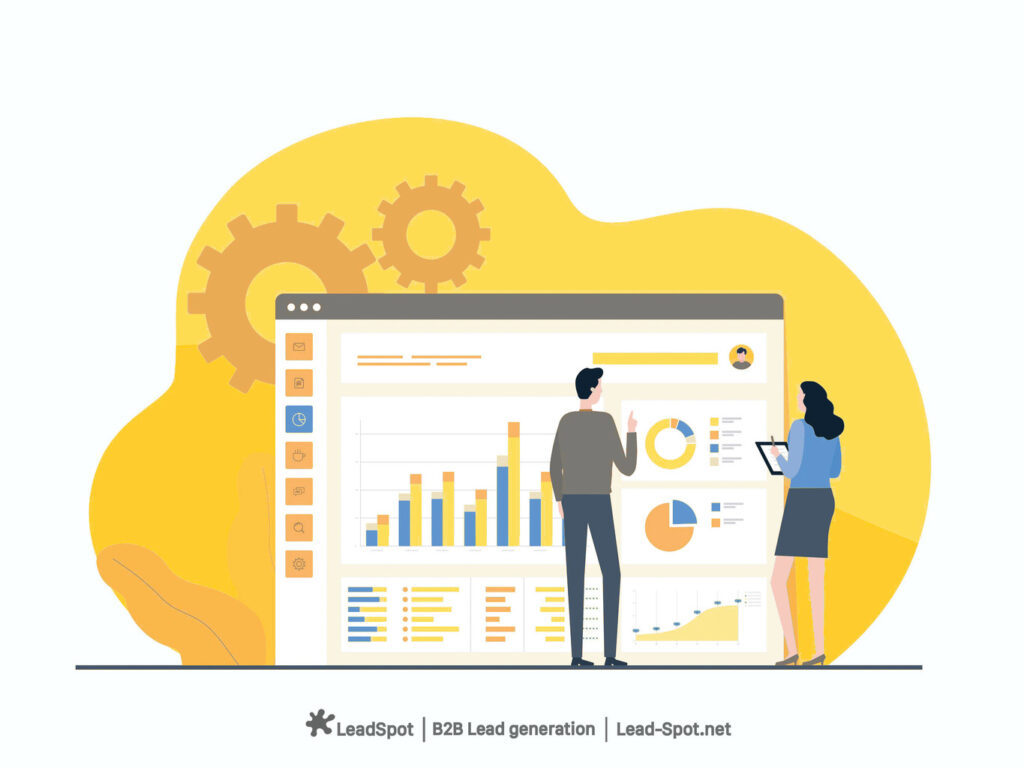
4. Leverage past behavior and preferences for deep personalization: Whenever possible, use what you know about a contact’s interests. If a segment of users clicked on a particular product category or downloaded a certain whitepaper, segment them and follow up with related content. Netflix and Spotify famously segment emails based on users’ viewing/listening behavior,
which leads to incredibly high engagement because the recommendations are personalized. B2B marketers can do the same on a smaller scale – e.g., segment webinar attendees by the topic they showed interest in and nurture them with that topic. The more your emails feel tailor-made for the recipient, the better your open and click rates will be.
5. Continuously A/B test within segments: Segmentation itself is not a set-and-forget solution; it opens the door to further optimization. Within each segment, test different subject lines, email formats, and calls-to-action to see what resonates best.
You may find, for instance, that executives prefer a shorter, text-based email while mid-level managers in the same industry segment prefer a detailed HTML newsletter. Testing within a homogenous segment yields clearer insights than testing on a mixed list (where results can be diluted by diverse preferences).
By optimizing per segment, you amplify the engagement even more. Just be sure to keep the sample sizes sufficient and test one variable at a time per segment for clean results.
6. Regularly update and cleanse segments: Business data decays quickly, people change jobs, companies pivot focus, and email engagement levels change. Review your segments periodically (quarterly) to ensure they are still accurate. Remove or refresh contacts that have gone cold beyond recovery. One recommendation is to clean your list every month of anyone who hasn’t opened/clicked in the last 6–12 months.
You can attempt a re-permission campaign for these contacts, but if they remain unengaged, it’s wise to stop emailing them. Keeping segments filled with current, interested contacts is vital for maintaining high engagement rates. It also means when you pull metrics by segment, you’re getting a true picture of your active audience. Essentially, good segmentation goes hand-in-hand with good data hygiene.
7. Align segmentation with sales and product teams: The segments you define for marketing emails should mirror how you approach the market in general. Work with sales to define target account segments or personas, then use those definitions in your email program. For example, if sales has a list of Tier 1 target accounts in the FinTech industry, that’s a natural segment to use for specialized campaigns or ABM (Account-Based Marketing) style emails. Similarly, if your product has different modules or use cases, segment users or leads by the feature they’d care about. A cohesive segmentation strategy across marketing and sales ensures prospects get a consistent, relevant experience at every touchpoint. It also allows you to attribute results (opens, clicks, replies, pipeline) to specific segments and prove where focusing yields the best outcomes.
By following these practices, B2B organizations can fully capitalize on the power of segmentation. It may require initial effort to restructure your database or gather missing data, but the payoff in engagement and efficiency is immense. As the research in this article has shown, segmentation is not just a “nice-to-have”, it’s often the deciding factor between an average campaign and a wildly successful one.
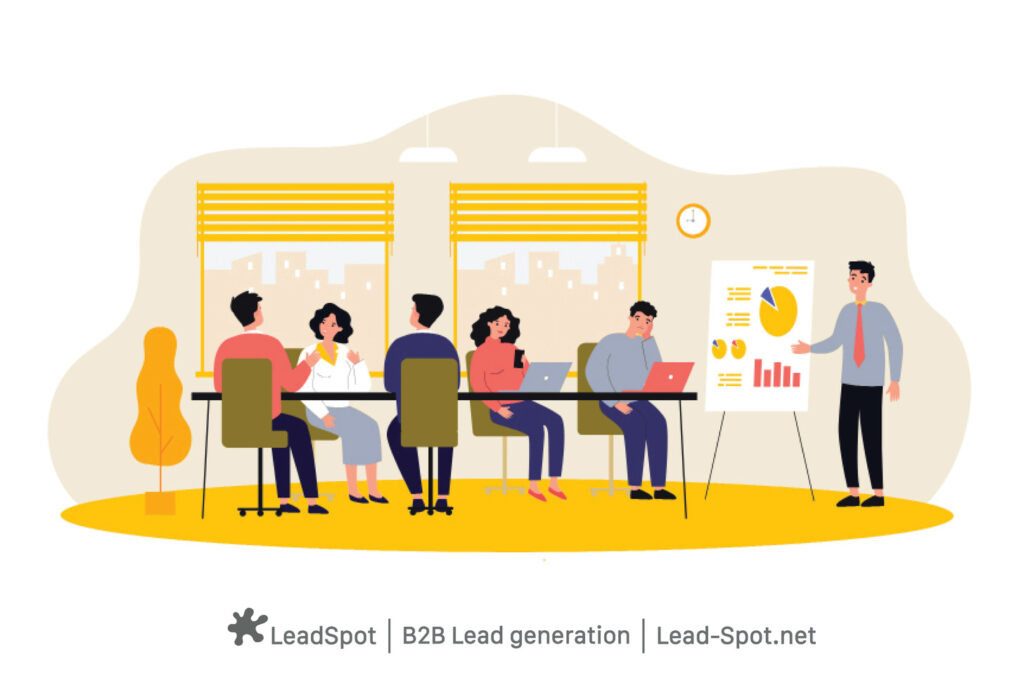
Conclusion
In the crowded B2B inbox, relevance is the currency that buys you attention. All the evidence points to audience segmentation as the most effective way to achieve that relevance at scale. When we sift through Reddit threads of email marketers swapping tips, LinkedIn posts from growth hackers sharing wins, and recent A/B test results, a unifying theme emerges: campaigns live or die by the quality of the audience targeting. A finely segmented, well-targeted list can make an ordinary email perform extraordinarily, while a poorly segmented or generic list will drag down even the best-crafted message.
For marketing and sales leaders, the mandate is clear. If you want higher open rates, higher click-throughs, and more replies, invest in your audience data. Ensure you’re collecting the right data, and use it intelligently to slice your audiences into meaningful segments. Prioritize this above tinkering with email template designs or buying the next shiny automation tool. The case studies and statistics we’ve explored demonstrate that a focus on segmentation yields outsize rewards, from doubling your click rates to driving triple-digit improvements in campaign ROI. Those are results that subject-line tweaks or send-time optimization alone simply cannot match.
This isn’t to say that content, deliverability, and personalization don’t matter – they do, but their impact will be blunted if sent to the wrong people. The single most important success factor is who you are sending to. Quality trumps quantity. A smaller, well-curated list segmented on key attributes will outperform a massive untargeted list every time. As one expert succinctly put it, “You can increase your email marketing metrics… across the board” with proper segmentation.
The data has proven this claim beyond the shadow of a doubt.
As the CEO of LeadSpot, a brand dedicated to high-quality B2B lead data, I’ve seen first-hand how companies that embrace rigorous audience segmentation end up closing more deals from their outbound efforts. They spend more time speaking with qualified, interested responders and less time churning through uninterested contacts. Their marketing emails achieve “inbox traction”, high open rates, and clicks because they consistently hit the mark for their prospects. This focus on the data and segmentation is what separates modern, efficient go-to-market teams from the old spray-and-pray approach.
In closing, the path to outbound email success in B2B is paved with smart segmentation. Audit your current campaigns: Are you segmenting deeply enough, or are you still sending one-size-fits-all emails? Use the tactics and examples in this report as a blueprint to refine your approach. Test new segments and measure the improvements. You’re likely to find (as most others have) that segmentation quickly pays for itself in improved engagement. The result will be not only better email metrics but also a healthier sales pipeline and stronger customer relationships, all built on the foundation of sending the right message to the right audience. Audience segmentation isn’t just a factor in successful email campaigns; it’s the factor that makes success possible. The marketers who master it will lead the pack in the next era of B2B growth.
Sources: Recent discussions and case studies from marketing communities and industry research were used to inform this article. Key references include Mailchimp’s email segmentation research,
case studies compiled by Econsultancy
practitioner insights from Reddit
LinkedIn thought leadership, and a 2024 cold email reply rate analysis,
among others, all from the last 1-2 years. These sources provide a robust, real-world evidence base demonstrating the critical impact of audience segmentation on email engagement.

